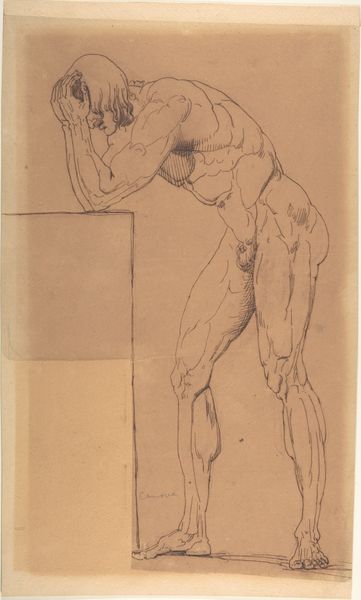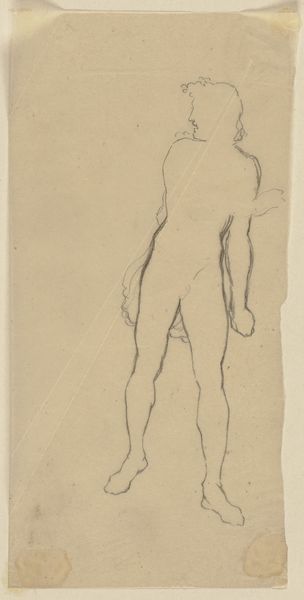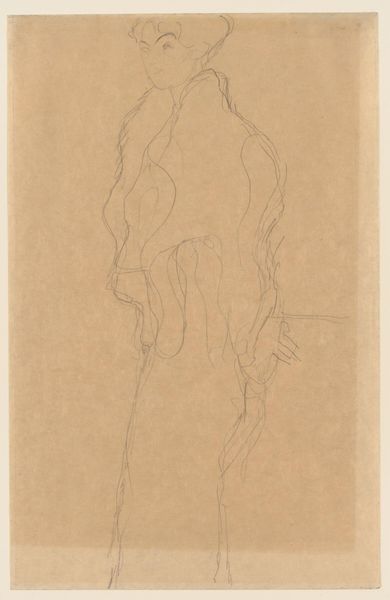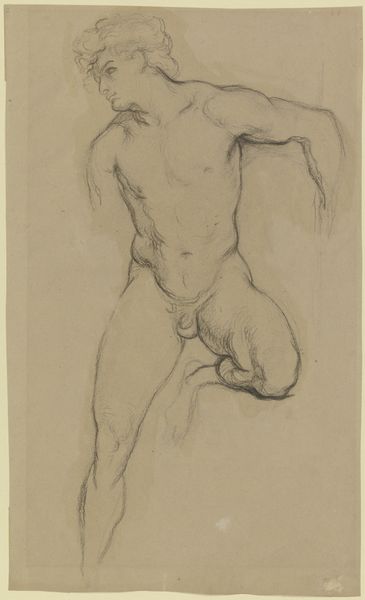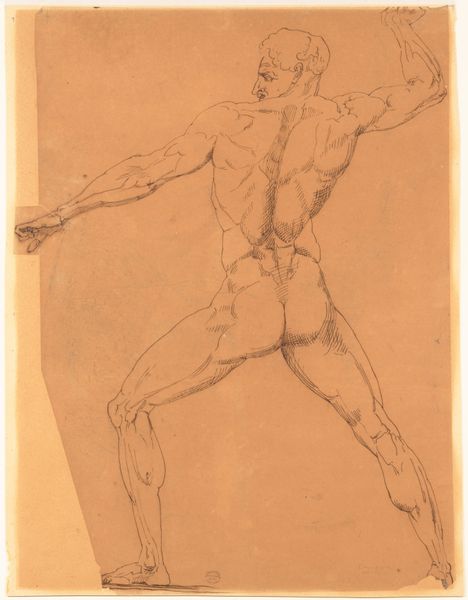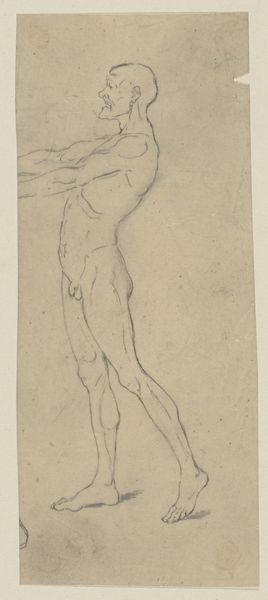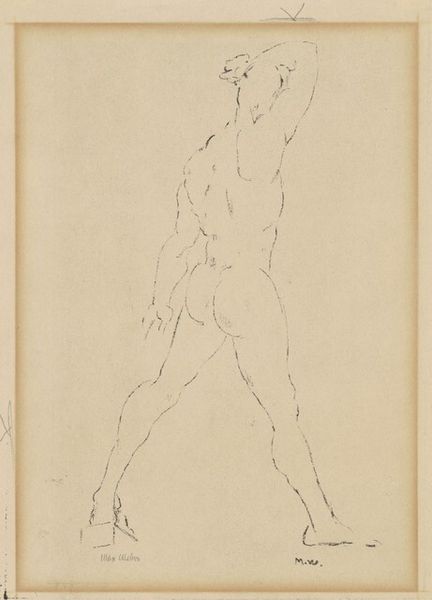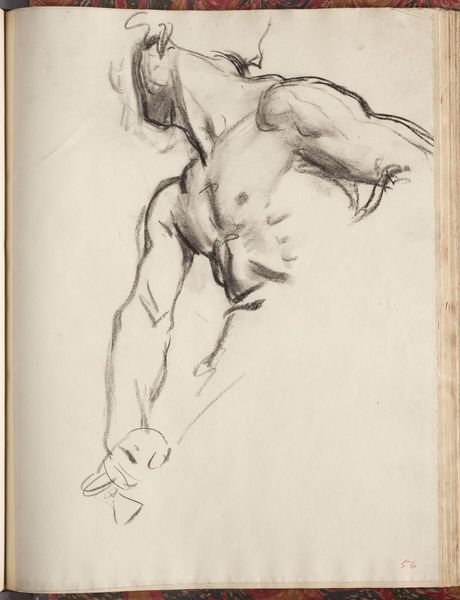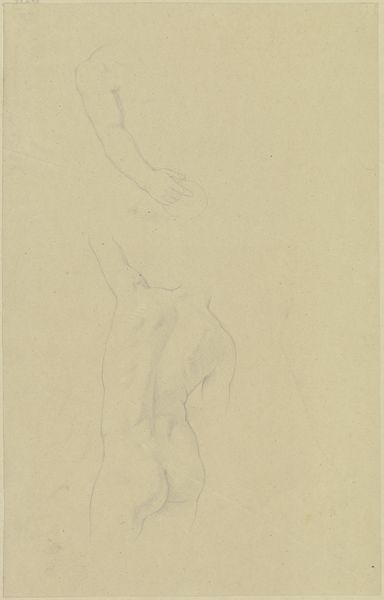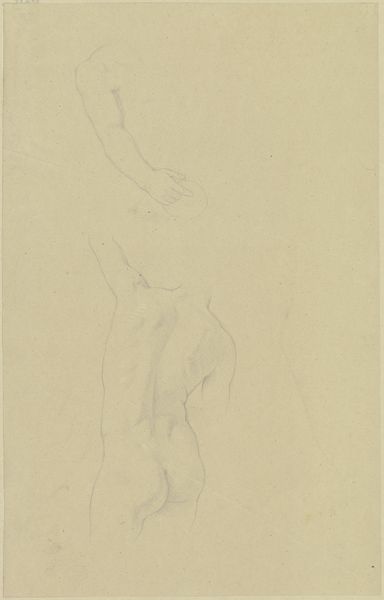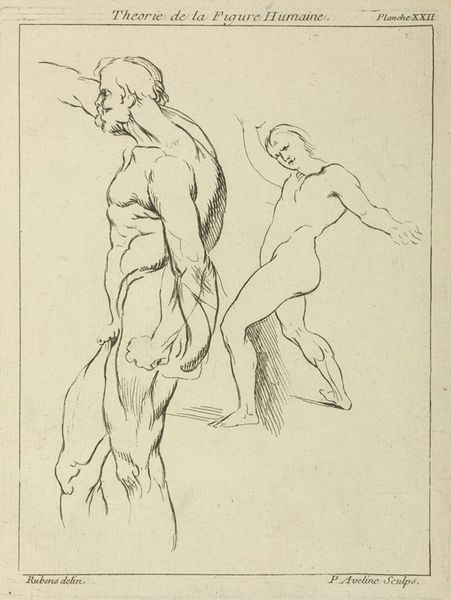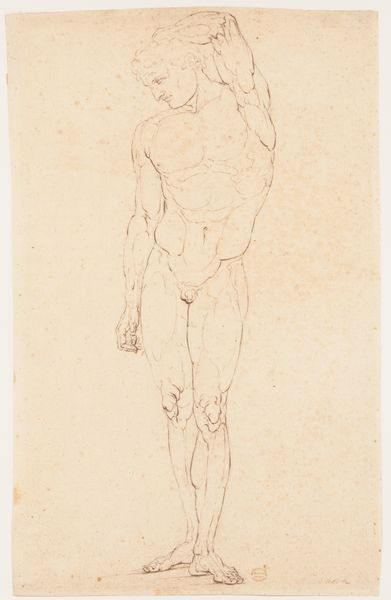
drawing
#
drawing
#
ink drawing
#
figuration
#
female-nude
#
line
#
academic-art
#
nude
#
erotic-art
Dimensions: 14 5/16 x 9 1/4 in. (36.4 x 23.4 cm)
Copyright: Public Domain
Editor: So, this is a copy after a reproduction of a Rodin drawing, dating roughly from 1855 to 1917. It's an ink drawing of a female nude. It feels very academic, almost like a study. What's your read on this piece? Curator: Considering its creation as a copy, it prompts reflection on how art institutions and pedagogical practices shaped artistic training and the canon. The focus on figuration and the female nude is very typical in academic settings. Was Rodin's work already highly valued and deemed worthy of copying when this drawing was made? Or was there another, less well-known artist's work used in the copy? Editor: That's an interesting point – it would depend on how Rodin was perceived at the time this copy was made. It certainly leans into the tradition of studying the nude figure, which was common in art academies. But how does the act of copying itself affect its historical or social value? Curator: The act of copying raises interesting questions about originality, authorship, and the circulation of images. Before mass reproduction, copying was a crucial way for artists to learn and for art to spread. If this was a study piece it's most probably associated to education. Consider its presence in a museum; does that elevate or diminish its significance? Editor: I suppose it gives the copy a different kind of legitimacy, placing it within a framework of art history, and allowing a broader audience to engage with Rodin's influence, however indirect. Does the copycat give a different tone, than say a mere apprentice drawing for school purposes? Curator: Absolutely. Displaying this "Copy after a reproduction..." offers a platform to dissect hierarchies within the art world. Who decides what art matters, and how are those decisions reinforced by institutions like the Met? Editor: It highlights the complex social forces at play. I've learned that even copies have a history. Thanks! Curator: Indeed, seeing art as shaped by socio-political decisions definitely enriches our view of its cultural value.
Comments
No comments
Be the first to comment and join the conversation on the ultimate creative platform.
